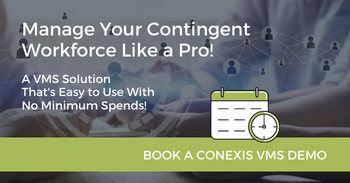As businesses continue to grow and evolve, the use of contingent workers - such as freelancers, contractors, and gig workers - has become increasingly prevalent. In this article, we'll discuss the different types of contingent workers, as well as explore some of the best practices and tools for managing an extended workforce effectively.
While contingent workers bring a range of benefits, such as increased flexibility, cost savings, and access to a wider pool of talent, managing an effective, strategic and successful contingent workforce program can be a complex task.
Understanding the Different Types of Contingent Workers
Before diving into the specifics of managing a contingent workforce, it's important to understand the different types of workers that fall under this umbrella. There are several different types of contingent workers, including gig workers, independent contractors, freelancers, and temporary employees.
These workers are not considered traditional employees, as they do not have a direct employment relationship with the company. Instead, they are hired on a project-by-project basis or as needed, and they are not entitled to the same benefits and protections as traditional employees.
The three main categories of contingent workers are:
- Freelancers: Independent professionals who work on a project-by-project basis.
- Contractors: Individuals who work under a contract for a specific period of time.
- Gig workers: Short-term workers hired through a platform, such as Uber.
Each type of worker has its own unique characteristics and considerations, so it's essential to understand the differences between them when building a plan for managing your non-employee workforce.
What are the Benefits of Contingent Workers?
There are several benefits to hiring contingent workers, including:
- Increased flexibility and scalability
- Reduced labor costs
- Access to a wider pool of talent
- Ability to tap into specialized skills and expertise
What are the Risks Associated With Contingent Workers?
While there are many benefits to hiring contingent workers, there are also significant risks. These risks include:
Lack of control: Managing a contingent workforce program is not easy. If the entire organization isn’t on the same wavelength, standardizing processes and centralizing data, the company will soon suffer from a lack of visibility and control of their non-employee workforce.
It’s time consuming: To source contingent workers, most organizations partner with staffing agencies. However, the additional work of managing staffing agencies, alongside managing non-employee workers, can make a contingent workforce program near-impossible for any organization that doesn’t have the expertise or resources to manage it effectively.
Legal and compliance issues: Companies must ensure that they are complying with all relevant laws and regulations when it comes to the treatment of contingent workers. This includes issues related to taxes, benefits, and employment status
Difficulty in managing relationships: Building and maintaining strong working relationships with contingent workers can be challenging, as these workers may be working with multiple companies at the same time.
Key Tasks to Consider When Setting Up Your Contingent Program
The first step in effectively managing a contingent workforce is to complete some key tasks that establish a clear process for onboarding, managing and evaluating their performance. This will ensure you are able to achieve continuous improvement within your program.
Some of the key tasks associated with managing a contingent workforce include:
✔️ Define clear roles and responsibilities: Contingent workers should have well-defined roles and responsibilities to ensure that everyone is on the same page. This can include a job description, a list of deliverables, and expected hours of work.
✔️ Design an onboarding process: A clear and efficient onboarding process is essential for contingent workers. This can include a training program, access to necessary tools and resources, and clear communication channels.
✔️ Analyze performance metrics: Establishing clear performance metrics and regularly tracking progress can help ensure that both contingent workers and the staffing agencies you partner with are meeting expectations and delivering high-quality work.
✔️ Use vendor management technology: Modern vendor management systems are designed to be easy to use and can seamlessly integrate with your company’s HR system. This gives your business the visibility and control it needs to implement an effective contingent workforce program.
Managing a contingent workforce can be challenging, but with the right approach and best practices, businesses can reap the benefits of this type of workforce while minimizing the risks.
By having clear policies and procedures in place, providing appropriate training and support, and regularly reviewing and updating these policies, businesses can effectively manage a non-employee workforce and achieve success.
Interested in more information on how you can better improve how you manage your non-employee workforce?
Book a demo of Conexis VMS today and learn how our easy-to-use and cost effective platform can revolutionize your contingent workforce program.




